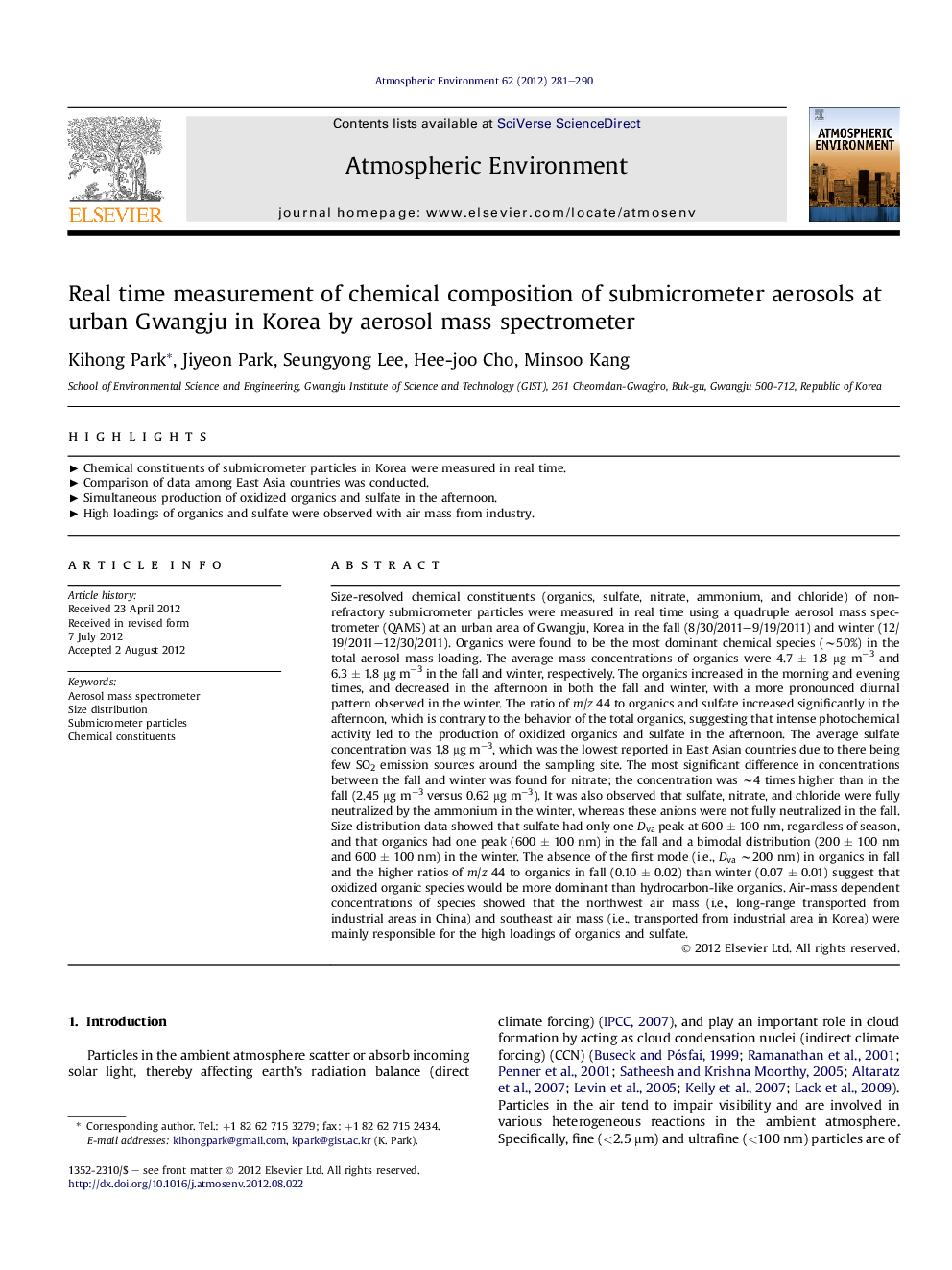| کد مقاله | کد نشریه | سال انتشار | مقاله انگلیسی | نسخه تمام متن |
|---|---|---|---|---|
| 4438656 | 1620409 | 2012 | 10 صفحه PDF | دانلود رایگان |

Size-resolved chemical constituents (organics, sulfate, nitrate, ammonium, and chloride) of nonrefractory submicrometer particles were measured in real time using a quadruple aerosol mass spectrometer (QAMS) at an urban area of Gwangju, Korea in the fall (8/30/2011–9/19/2011) and winter (12/19/2011–12/30/2011). Organics were found to be the most dominant chemical species (∼50%) in the total aerosol mass loading. The average mass concentrations of organics were 4.7 ± 1.8 μg m−3 and 6.3 ± 1.8 μg m−3 in the fall and winter, respectively. The organics increased in the morning and evening times, and decreased in the afternoon in both the fall and winter, with a more pronounced diurnal pattern observed in the winter. The ratio of m/z 44 to organics and sulfate increased significantly in the afternoon, which is contrary to the behavior of the total organics, suggesting that intense photochemical activity led to the production of oxidized organics and sulfate in the afternoon. The average sulfate concentration was 1.8 μg m−3, which was the lowest reported in East Asian countries due to there being few SO2 emission sources around the sampling site. The most significant difference in concentrations between the fall and winter was found for nitrate; the concentration was ∼4 times higher than in the fall (2.45 μg m−3 versus 0.62 μg m−3). It was also observed that sulfate, nitrate, and chloride were fully neutralized by the ammonium in the winter, whereas these anions were not fully neutralized in the fall. Size distribution data showed that sulfate had only one Dva peak at 600 ± 100 nm, regardless of season, and that organics had one peak (600 ± 100 nm) in the fall and a bimodal distribution (200 ± 100 nm and 600 ± 100 nm) in the winter. The absence of the first mode (i.e., Dva ∼200 nm) in organics in fall and the higher ratios of m/z 44 to organics in fall (0.10 ± 0.02) than winter (0.07 ± 0.01) suggest that oxidized organic species would be more dominant than hydrocarbon-like organics. Air-mass dependent concentrations of species showed that the northwest air mass (i.e., long-range transported from industrial areas in China) and southeast air mass (i.e., transported from industrial area in Korea) were mainly responsible for the high loadings of organics and sulfate.
► Chemical constituents of submicrometer particles in Korea were measured in real time.
► Comparison of data among East Asia countries was conducted.
► Simultaneous production of oxidized organics and sulfate in the afternoon.
► High loadings of organics and sulfate were observed with air mass from industry.
Journal: Atmospheric Environment - Volume 62, December 2012, Pages 281–290